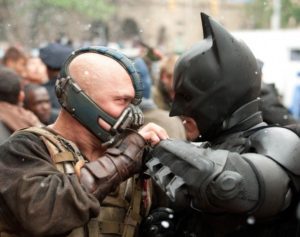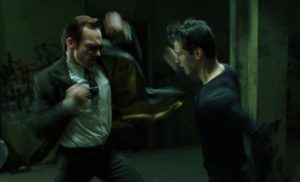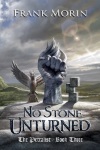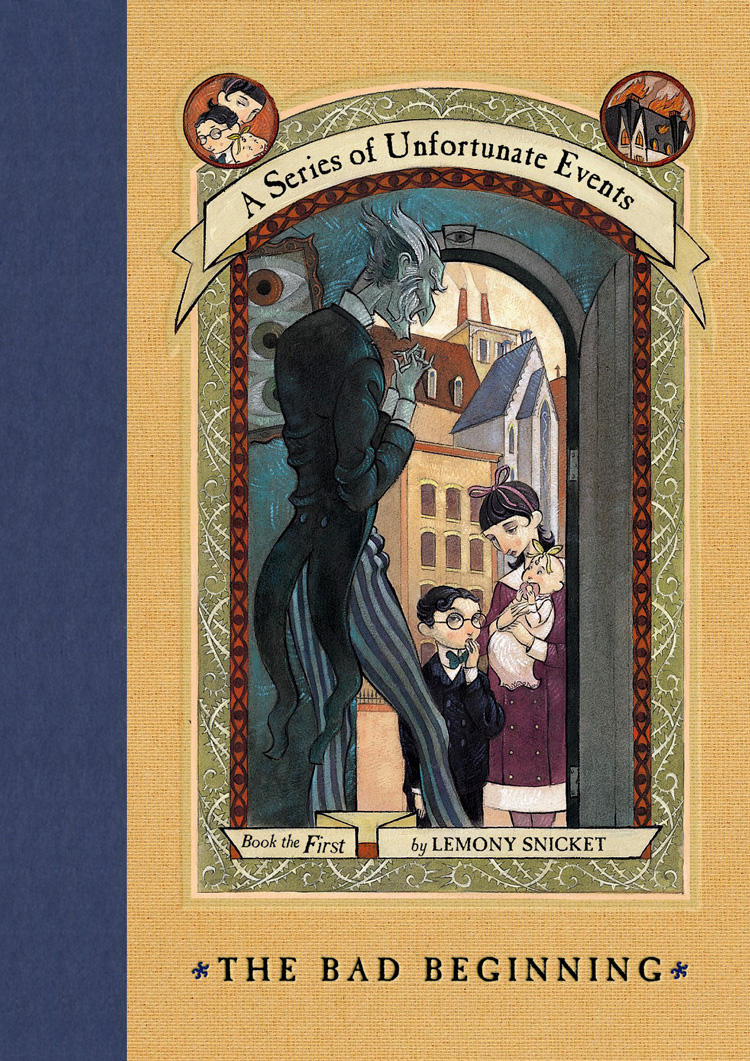Attraction is easy. Desire is a deep and constant companion for most people. Even advertisers know this. We all have idle thoughts. People go out on a weekend looking for sex, and may find it or not. This is not sexual tension.
For sexual tension, you need a compelling sexual attraction – something that really pushes a character to do something they might not do otherwise.
Often sex and romance get lumped together in fiction. Both serve similar functions in a story, and often the protagonists’ sex is an expression of the love.
But not always. People can strongly desire sex with people they don’t love first, or at all, and it can have consequences other than love. Sex can also be an exchange, or a pressure, used in relationships characterized by imbalanced power. People can deny their true sexual attraction and still have pleasurable sex with others – even of different genders than their natural preference – who are not their first choice. Or, all of the above at once!
Sexual tension is a thing of the body, of the senses, of the id. It is the realm of the cad, the rake, the femme fatale – and yet, it is for all of us. It is manipulative and often shadowy, if not actually dark. It is our selfishness, our self-indulgence.
In fiction, sexual tension has something inappropriate or unwise – from the character’s view, or from the story’s. I don’t mean to demonize sex, or advocate a subtle puritanism, but fiction is always a distorted and extreme depiction, and sex is always a vulnerable state.
Characters can deny it, or give into it. Giving in is inherently heedless – if the sex were uncomplicated, they would just have it. It may lead to ruin. It may be for the good of the persons involved if not the society that denies them. It may even lead to romance and love, but not easily, and not without great disturbance in other aspects of the characters’ lives.
For good or ill, sexual tension leads characters astray.
The endless no
Not all attractions get acted out. Sometimes they linger, unacted on. Long enough and these denials can age like wine into bonds of friendship, or fester into ugly thoughts, or simply drag at us, like tides from a moon we’re bound to.
This works well for series characters, whose relationship can develop over several stories. In a standalone, the reader often comes in the middle of the relationship. In either case, seeing the tension is often more economical than backstory.
Be careful, however, to keep it in its place – after all, the characters are by definition in denial. When we see two characters drunk, or on their spouse’s arms at cocktail party, you can get to mutual sexual interest quickly and believably. In a crime scene investigation, it’s unprofessional, badly comic, and disorienting.
Locks and keys
As I said earlier, uncomplicated sex is not tense. If sex starts with a tension beyond simple anticipation, an attraction has to be more than the opening of a door. It has to be an unlocking, or a hacking, someone gaining access.
The disturbance I mentioned comes from this access, or can precede it. A person otherwise capable of denial might have had a separate major change in perspective making them less in control of their emotions. Or, they might simply find a person uniquely attractive person. I combined these in my novel The Demon in Business Class. When my rival protagonists first meet, they respond deeply on a sensory level, each for their own well-foreshadowed reasons. They’ve also both been through enough change in their recent lives that they are too compelled by their feelings. As my Gabriel later admits, “I was tired of doing the smart thing.”
You don’t have to underline what the character wants. You can even provide them with regular dollops of something they don’t want, even if it’s their normal. Charlaine Harris did this overtly, making Sookie Stackhouse unavoidably psychic, and vampire Bill Compton her first experience of not knowing too much.
Conditional attraction
The ugliest sexual tension is also the most interesting – when it isn’t mutual. A character’s deep response to a disinterested, or manipulative, other gives the other power.
Usually these come on fast, giving the character no time to think. Also, once another is empowered, they quickly take what they want, or develop contempt.
Remember that even in this situation, you need to consider both characters. It’s not enough that a person find themselves vulnerable to a predator. Why? It’s rare that another is so compelling to a healthy ego; maybe the character’s real weakness is a belief in a distorted version of their true self.
Meanwhile, the predator has to know its prey. Maybe it adapts to attract a known mark, or just happily senses the particular insecurities it knows how to enthrall.
The empowerment can come after the possession, too, like Scheherazade’s tales. If a powerful person takes on an inferior for a lover, but then is drawn into vulnerability, the stakes for the attraction become more compelling.
The movie Looper has a lovely and strange conditional attraction. The mother seduces the young hitman, not for any specific reason, and with a powerful excitement – an intuitive empowerment. She wants him when he is most lost, to get him to protect her son. It’s never stated, it’s hot, but it’s clear he’s the one changing, not her.
Closing the deal
Just as the moment of attraction says more than backstory, the sex that comes from the tension can express the tension economically. Sex isn’t a mindless act. Even if characters give into passion they still know themselves. They also tend to enjoy it. In positions of weakness, or sudden strength, they can still embrace that pleasure.
Sex goes great with any mature genre. Enjoy exploring all the unromantic reasons characters get together!
 Anthony Dobranski writes stylish fantasy and science-fiction novels with big ideas and desperate characters. His first novel is the modern-day international fantasy The Demon in Business Class, from WordFire Press. He is currently writing his second novel.
Anthony Dobranski writes stylish fantasy and science-fiction novels with big ideas and desperate characters. His first novel is the modern-day international fantasy The Demon in Business Class, from WordFire Press. He is currently writing his second novel.
 Consider as an example the action/adventure film John Wick. The introduction and inciting incident occur in the first fifteen minutes of the movie and the climax occurs at roughly one hour and fifteen minutes. Taken at a very high level, what happens during the hour between those two points? First, there is a period of milieu and character work to establish the character of John Wick and the rest of the world. Then there is a beating delivered by the big bad and the big bad’s first try/fail cycle to resolve the issue without violence. This is followed by a gun fight, a short period of world exploration, a gun fight, a brief pause for recovery, a fist fight, a briefer pause for a few wise cracks, a gun fight, a yet briefer pause in which John Wick sets some stuff on fire, and once again a gun fight that ends in a capture sequence. John then escapes captivity and dives straight into the climax of the movie. The tension is not allowed to slacken for a moment because John is near constantly either in danger and/or kicking some ass.
Consider as an example the action/adventure film John Wick. The introduction and inciting incident occur in the first fifteen minutes of the movie and the climax occurs at roughly one hour and fifteen minutes. Taken at a very high level, what happens during the hour between those two points? First, there is a period of milieu and character work to establish the character of John Wick and the rest of the world. Then there is a beating delivered by the big bad and the big bad’s first try/fail cycle to resolve the issue without violence. This is followed by a gun fight, a short period of world exploration, a gun fight, a brief pause for recovery, a fist fight, a briefer pause for a few wise cracks, a gun fight, a yet briefer pause in which John Wick sets some stuff on fire, and once again a gun fight that ends in a capture sequence. John then escapes captivity and dives straight into the climax of the movie. The tension is not allowed to slacken for a moment because John is near constantly either in danger and/or kicking some ass. I believe that the story of Arrival works as well as it does because everyone goes into a first contact story expecting an overt conflict between humanity and the aliens. However, twists this trope on its head, which is intriguing in and of itself. The main story is a mystery driven by the question, “What do the aliens want?” Along the way, we the audience are given pieces of the puzzle in such a way that they don’t all come together until the very end. This plotting structure latches onto our fundamental human curiosity and pulls us forward with the illusion of progress towards getting an ultimate answer.
I believe that the story of Arrival works as well as it does because everyone goes into a first contact story expecting an overt conflict between humanity and the aliens. However, twists this trope on its head, which is intriguing in and of itself. The main story is a mystery driven by the question, “What do the aliens want?” Along the way, we the audience are given pieces of the puzzle in such a way that they don’t all come together until the very end. This plotting structure latches onto our fundamental human curiosity and pulls us forward with the illusion of progress towards getting an ultimate answer. First is by introducing conflict internal to the relationship. By giving the romantic interests compelling personal conflicts and reservations, you allow them to stand in the way of their own happiness. It’s important to note that the reasons holding your characters apart need to be fundamental to their character, something substantial enough that it can withstand several try/fail cycles and significant enough that it poses a legitimate threat to the relationship. An example of this technique can be found in the early relationship between Eve Dallas and Roarke in Naked in Death by JD Robb. During her investigation of a sensitive homicide, Lieutenant Dallas meets Roarke and sparks fly. She feels conflicted because she can’t eliminate him as a suspect in her case, but also increasingly can’t deny her developing feelings for him. Her gut tells her that Roarke is innocent, but she can’t prove it. Robb draws us through the romantic arc by having Dallas’ blooming feelings clash with her sense of duty.
First is by introducing conflict internal to the relationship. By giving the romantic interests compelling personal conflicts and reservations, you allow them to stand in the way of their own happiness. It’s important to note that the reasons holding your characters apart need to be fundamental to their character, something substantial enough that it can withstand several try/fail cycles and significant enough that it poses a legitimate threat to the relationship. An example of this technique can be found in the early relationship between Eve Dallas and Roarke in Naked in Death by JD Robb. During her investigation of a sensitive homicide, Lieutenant Dallas meets Roarke and sparks fly. She feels conflicted because she can’t eliminate him as a suspect in her case, but also increasingly can’t deny her developing feelings for him. Her gut tells her that Roarke is innocent, but she can’t prove it. Robb draws us through the romantic arc by having Dallas’ blooming feelings clash with her sense of duty. The second option is to introduce some element of external conflict, where your romantic interests strive together to try to overcome a barrier from outside the relationship. Again whatever the threat is, it needs to be big enough to possibly end the relationship. Twenty three books later in Innocent in Death, Robb introduces one of Roarke’s old girlfriends into the storyline to give Eve an extra emotional complication on top of her homicide investigation. The ex-girlfriend’s presence causes friction between Eve and Roarke and in so doing threatens their, by then well established, relationship. In both cases, the emotional distance between the characters drives our readers forward; they want to make sure that Eve and Roarke end up together.
The second option is to introduce some element of external conflict, where your romantic interests strive together to try to overcome a barrier from outside the relationship. Again whatever the threat is, it needs to be big enough to possibly end the relationship. Twenty three books later in Innocent in Death, Robb introduces one of Roarke’s old girlfriends into the storyline to give Eve an extra emotional complication on top of her homicide investigation. The ex-girlfriend’s presence causes friction between Eve and Roarke and in so doing threatens their, by then well established, relationship. In both cases, the emotional distance between the characters drives our readers forward; they want to make sure that Eve and Roarke end up together.






 Honestly? I’ve never thought about tension while writing. I’ve thought about conflict a whole lot: overarching conflict, conflict between characters, conflict with the environment, etc. But I’ve never framed it in my mind as “tension.” After some thinking, I decided it wouldn’t be quite right to offer advice about something that I don’t tend to think about while writing. However, I have noticed it while reading. So in lieu of offering advice, I’ve put together a list of memorable stories that created tension in a very unique way that may help you in your own writing. The fun of creating tension doesn’t have to be all your characters’ doing. By honing in on your narrative voice, you can create tension between you and your reader using a variety of techniques.
Honestly? I’ve never thought about tension while writing. I’ve thought about conflict a whole lot: overarching conflict, conflict between characters, conflict with the environment, etc. But I’ve never framed it in my mind as “tension.” After some thinking, I decided it wouldn’t be quite right to offer advice about something that I don’t tend to think about while writing. However, I have noticed it while reading. So in lieu of offering advice, I’ve put together a list of memorable stories that created tension in a very unique way that may help you in your own writing. The fun of creating tension doesn’t have to be all your characters’ doing. By honing in on your narrative voice, you can create tension between you and your reader using a variety of techniques. In the classic book One Hundred Years of Solitude, Gabriel García Márquez sets up tension in the first half of his book by dropping the same line over and over: “Many years later, as he faced the firing squad, Colonel Aureliano Buendía remembered…” Instantly, the reader questions this. Aureliano before a firing squad? How did he get there? Also… Colonel? When does he become a Colonel? With this line, the author continues to keep these questions fresh in the reader’s mind, and the reader continues on with the book in order to get the answers to those questions.
In the classic book One Hundred Years of Solitude, Gabriel García Márquez sets up tension in the first half of his book by dropping the same line over and over: “Many years later, as he faced the firing squad, Colonel Aureliano Buendía remembered…” Instantly, the reader questions this. Aureliano before a firing squad? How did he get there? Also… Colonel? When does he become a Colonel? With this line, the author continues to keep these questions fresh in the reader’s mind, and the reader continues on with the book in order to get the answers to those questions. In one of the darkest children’s series out there, Lemony Snicket (Daniel Handler) adds a warning to the reader at the beginning of every book. In the very first book, he lays the land:
In one of the darkest children’s series out there, Lemony Snicket (Daniel Handler) adds a warning to the reader at the beginning of every book. In the very first book, he lays the land: This technique is a favorite among Literary Fiction authors and moviemakers. The author has one character telling the story as they remember it, allowing them to be the narrator. However, the switches from past to present is up to the author. That means right when something happens, the author has the power to pull back to present time, have the narrator reflect for a time, and then go back into the action. This undoubtedly drives some readers nuts, but can we deny it causes tension? Nope! An example of this would be Middlesex by Jeffrey Eugenides, where our narrator, Cal, starts most chapters in the present, and then switches back to telling his grandparents’ and parents’ stories. The reader becomes anxious to see what’s going on in the present, and yet is forcibly taken to the past instead. This, in the best cases, builds tension by way of anticipation.
This technique is a favorite among Literary Fiction authors and moviemakers. The author has one character telling the story as they remember it, allowing them to be the narrator. However, the switches from past to present is up to the author. That means right when something happens, the author has the power to pull back to present time, have the narrator reflect for a time, and then go back into the action. This undoubtedly drives some readers nuts, but can we deny it causes tension? Nope! An example of this would be Middlesex by Jeffrey Eugenides, where our narrator, Cal, starts most chapters in the present, and then switches back to telling his grandparents’ and parents’ stories. The reader becomes anxious to see what’s going on in the present, and yet is forcibly taken to the past instead. This, in the best cases, builds tension by way of anticipation.